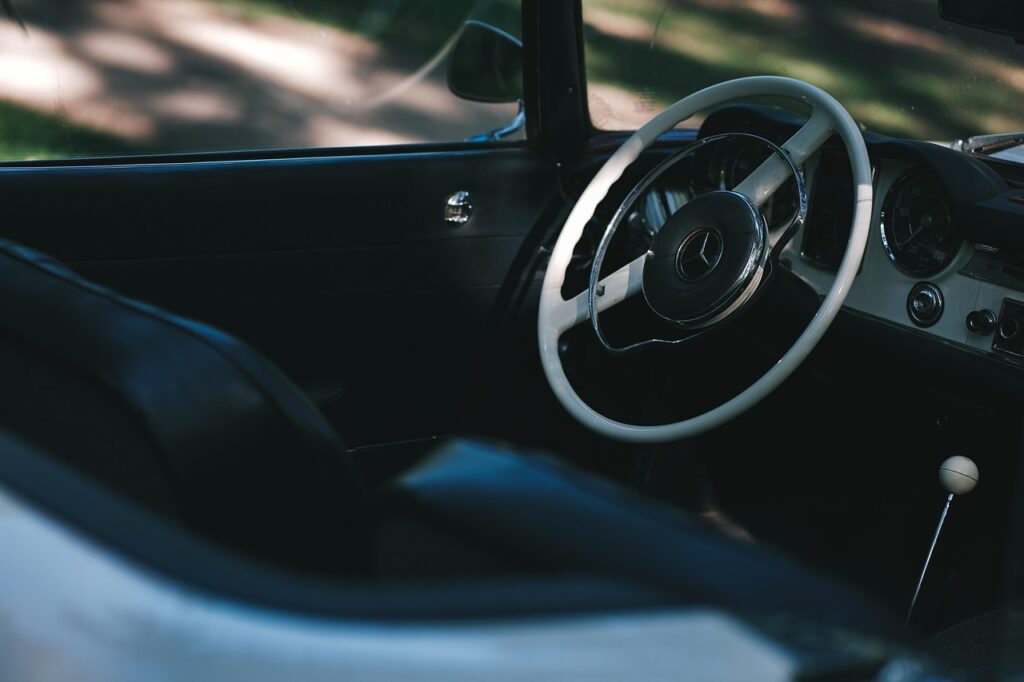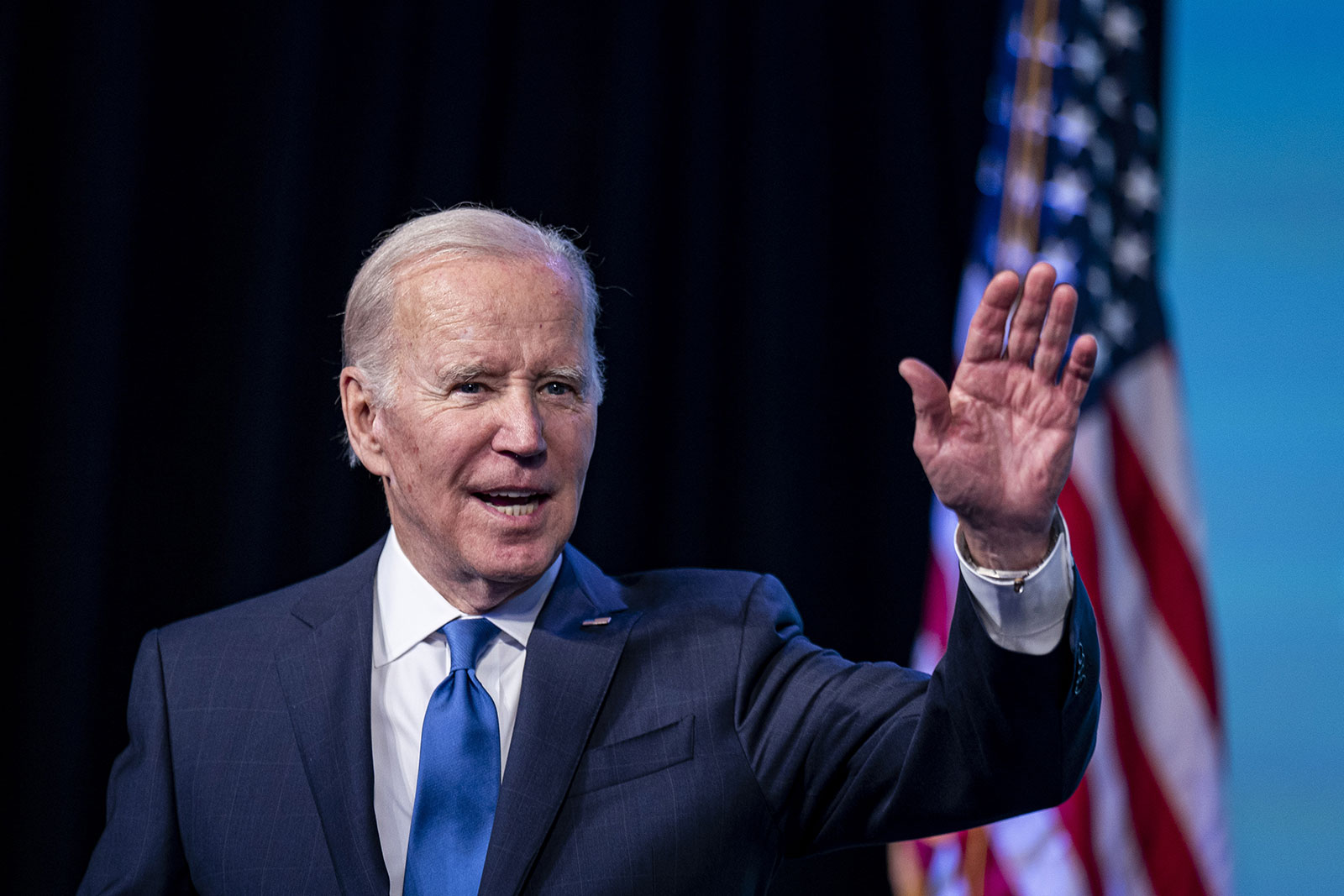
For more than a century, the vehicles that transport the President of the United States have served as more than mere conveyances; they are rolling symbols of American power, ingenuity, and the evolving demands of security in an ever-changing world. From humble beginnings with horse-drawn carriages trailed by early automobiles to today’s custom-built, heavily armored “Beast,” the story of presidential cars is a fascinating chronicle deeply intertwined with the nation’s history, technological progress, and the paramount concern for presidential safety.
This journey through automotive history offers a unique lens through which to view the presidency itself. Each vehicle, whether a personal preference or a purpose-built fortress, reflects the era in which it served, embodying the spirit, challenges, and advancements of its time. We delve into the stories of these iconic machines, exploring their features, the historical moments they witnessed, and the lasting legacies they have forged in the annals of American presidential lore.
Join us as we embark on a detailed exploration of the remarkable automobiles that have carried the leaders of the free world, revealing how these presidential vehicles have not just made history, but are, in themselves, profound pieces of it.
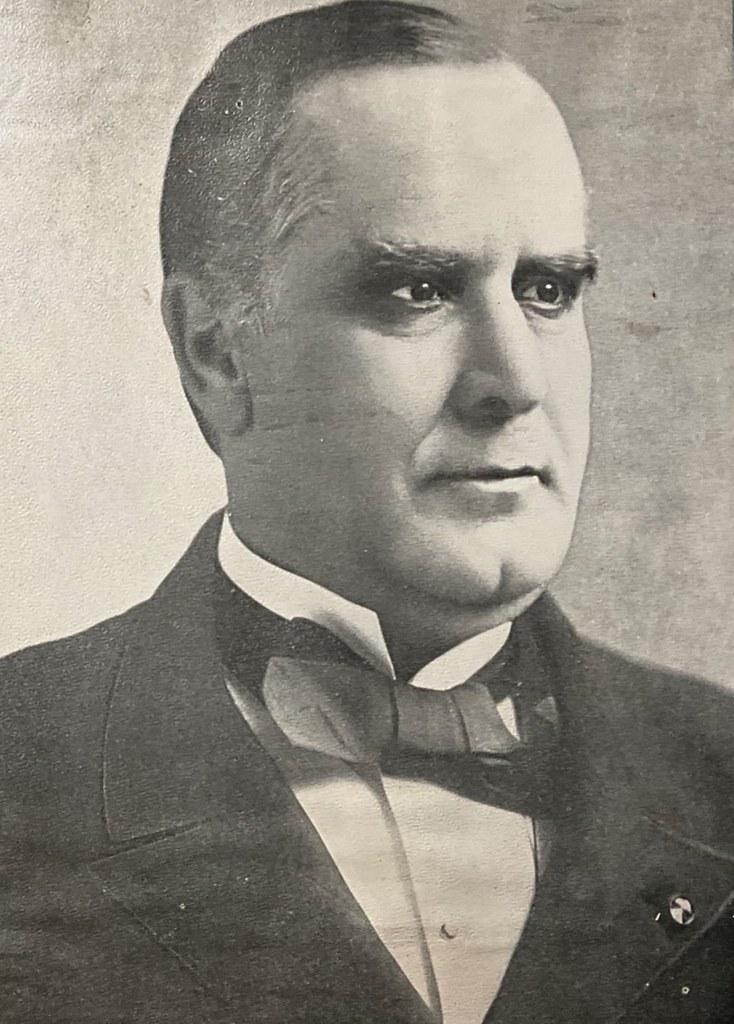
1. **The Dawn of Automotive Diplomacy: Early Presidential Car Adoption**The shift from horse-drawn carriages to automobiles for presidential transport marked a significant cultural and technological milestone in the early 20th century. While initially met with some trepidation, the practicality and image-making potential of the motorcar soon became undeniable. The very first president to experience this new mode of transport was President William McKinley, who, on July 13, 1901, “briefly rode in a Stanley Motor Carriage Company steam car.”
Interestingly, the United States Secret Service, accustomed to following the presidential horse-and-buggy on foot, quickly recognized the need to adapt. With the popularization of the automobile, they purchased a “1907 White Motor Company steam car to follow President Theodore Roosevelt’s horse-drawn carriage.” However, Roosevelt himself “avoided riding in the vehicle due to his ‘image as a rough-riding horseman’,” highlighting the early tensions between tradition and modern convenience.
President William Howard Taft ushered in a new era, dramatically changing things at the White House by “converting the stables there to a garage and purchasing a four-car fleet.” This substantial acquisition, costing “$12,000 (equivalent to about $420,000 in 2024),” included “two ‘luxurious’ Pierce-Arrow cars, a Baker Motor Vehicle electric car, and a $4,000 (equivalent to about $140,000 in 2024) 1911 White Motor Company steam car.” President Taft developed a particular fondness for the steam car, appreciating its unique ability to allow him to “conceal himself from press photographers with a ‘carefully timed burst of steam,'” a rather ingenious, if somewhat theatrical, use of early automotive technology for presidential privacy.
Car Model Information: 2022 Lincoln Aviator Reserve AWD
Name: Stanley Motor Carriage Company
Logo: Stanley logo.gif
LogoSize: 175px
Fate: Sold and dissolved
Foundation: 1902 (first vehicle produced 1897)
Defunct: 1924
Location: United States
Industry: Automobile
KeyPeople: Francis Edgar Stanley
Products: Vehicles
Categories: 1900s cars, 1910s cars, 1920s cars, All Wikipedia articles written in American English, All articles needing additional references
Summary: The Stanley Motor Carriage Company was an American manufacturer of steam cars that operated from 1902 to 1924, going defunct after it failed to adapt to competition from rapidly improving internal combustion engine vehicles. The cars made by the company were colloquially called Stanley Steamers although several different models were produced.
Get more information about: Stanley Motor Carriage Company
Buying a high-performing used car >>>
Brand: Stanley Motor Carriage Company Model: Steam Car
Price: $39,000 Mileage: 66,933 mi.
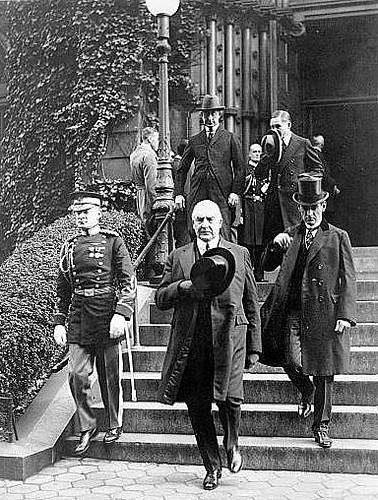
2. **From Personal Preference to Inaugural Milestones: Wilson’s Pierce-Arrow and Hoover’s Cadillac V-16**
As the automobile became more ingrained in American society, presidents began to express personal preferences for their official and private vehicles, often reflecting the era’s luxury and engineering prowess. President Woodrow Wilson, for instance, was so enamored with “the three Pierce-Arrow cars purchased by his administration that he bought one of them from the government for US$3,000 (equivalent to $52,886 in 2024) when he left office in 1921.” This act underscored a growing comfort and attachment to these machines that extended beyond official duties.
Beyond personal preference, cars began to play a role in presidential ceremonies. President Warren G. Harding holds the distinction of being “the first president to use a car to drive to his inauguration,” a symbolic moment that solidified the automobile’s place in presidential pomp and circumstance. He was also notably “the first qualified driver to be elected president,” adding another layer of personal connection to the vehicles he commanded.
The automobiles of this period also reflected the status and economic power of the nation’s leader. President Herbert Hoover, during his time in office, was known to have a “Cadillac V-16,” a testament to the luxurious and technologically advanced vehicles available to the elite of the time. These cars, while not yet the heavily armored fortresses of later decades, represented the pinnacle of automotive design and prestige, setting the stage for more specialized presidential transport to come.
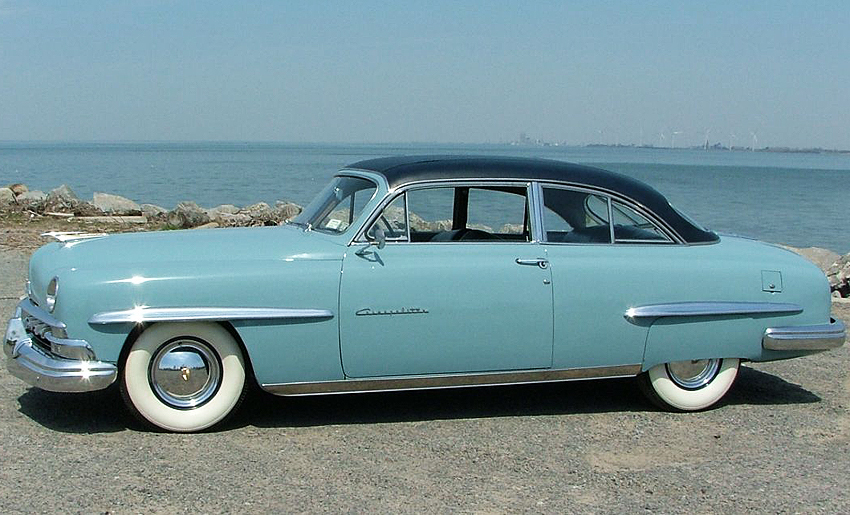
3. **The Post-War Era: Truman/Eisenhower Lincoln Cosmopolitans and the “Bubble-top”**The mid-20th century saw continued innovation in presidential transport, often driven by a blend of practical needs, security concerns, and even a touch of presidential rivalry. Legend has it that President Harry S. Truman, holding a “grudge against General Motors because they would not give him use of their cars during his run for the 1948 presidential election,” chose Lincoln to provide the presidential state car in 1950. This decision led to the White House leasing “ten Lincoln Cosmopolitans,” marking a significant fleet upgrade.
These cars were not off-the-rack models; they were “modified by coachbuilders Henney Motor Company and Hess and Eisenhardt to provide extra security features and extra headroom to accommodate the tall silk hats popular at the time, and were painted black.” Among the fleet, “nine of the automobiles had enclosed bodies, while the tenth was an armored convertible especially for President Truman.” This special convertible was a formidable machine, measuring “20 feet (6.1 m) long, 6.5 feet (2.0 m) wide, and weighed 6,500 pounds (2,900 kg), 1,700 pounds (770 kg) heavier than a stock Cosmopolitan.” All ten vehicles were equipped with “152-horsepower (113 kW) V8 engines ‘with heavy-duty Hydra-Matic transmissions,'” ensuring they could handle their considerable bulk.
Perhaps the most iconic feature of this era was introduced in 1954 when President Dwight D. Eisenhower had the Cosmopolitan convertible “fitted with a Plexiglas roof that became known as the ‘Bubble-top’.” This transparent roof allowed the president to be more visible to the public, a design choice reflecting the relatively open security posture of the time. The “Bubble-top” remained a fixture in presidential service “until 1965,” demonstrating its utility and longevity, and by May 2008, it had accumulated “approximately 105,942 miles (170,497 km)” on its odometer.
Car Model Information: 1951 Lincoln Cosmopolitan
Caption: 1949 Lincoln Cosmopolitan Convertible
Name: Lincoln Cosmopolitan
Manufacturer: Lincoln Motor Company
Production: 1948–1954
Class: full-size,luxury car
Predecessor: Lincoln EL-series
Successor: Lincoln Premiere
Layout: FR layout
Categories: 1940s cars, 1950s cars, All articles covered by WikiProject Wikify, All articles with unsourced statements, All pages needing cleanup
Summary: The Lincoln Cosmopolitan is a full-size luxury car that was sold by Lincoln from the 1949 through the 1954 model year. All Lincolns were manufactured at Lincoln Assembly, Dearborn, Michigan, while some were sent in “knock-down kits” to regional factories at Maywood Assembly, Maywood, California or St. Louis Assembly, St.Louis, Missouri, and assembled locally.
Get more information about: Lincoln Cosmopolitan
Buying a high-performing used car >>>
Brand: Lincoln Model: Cosmopolitan
Price: $25,000 Mileage: 9,498 mi.
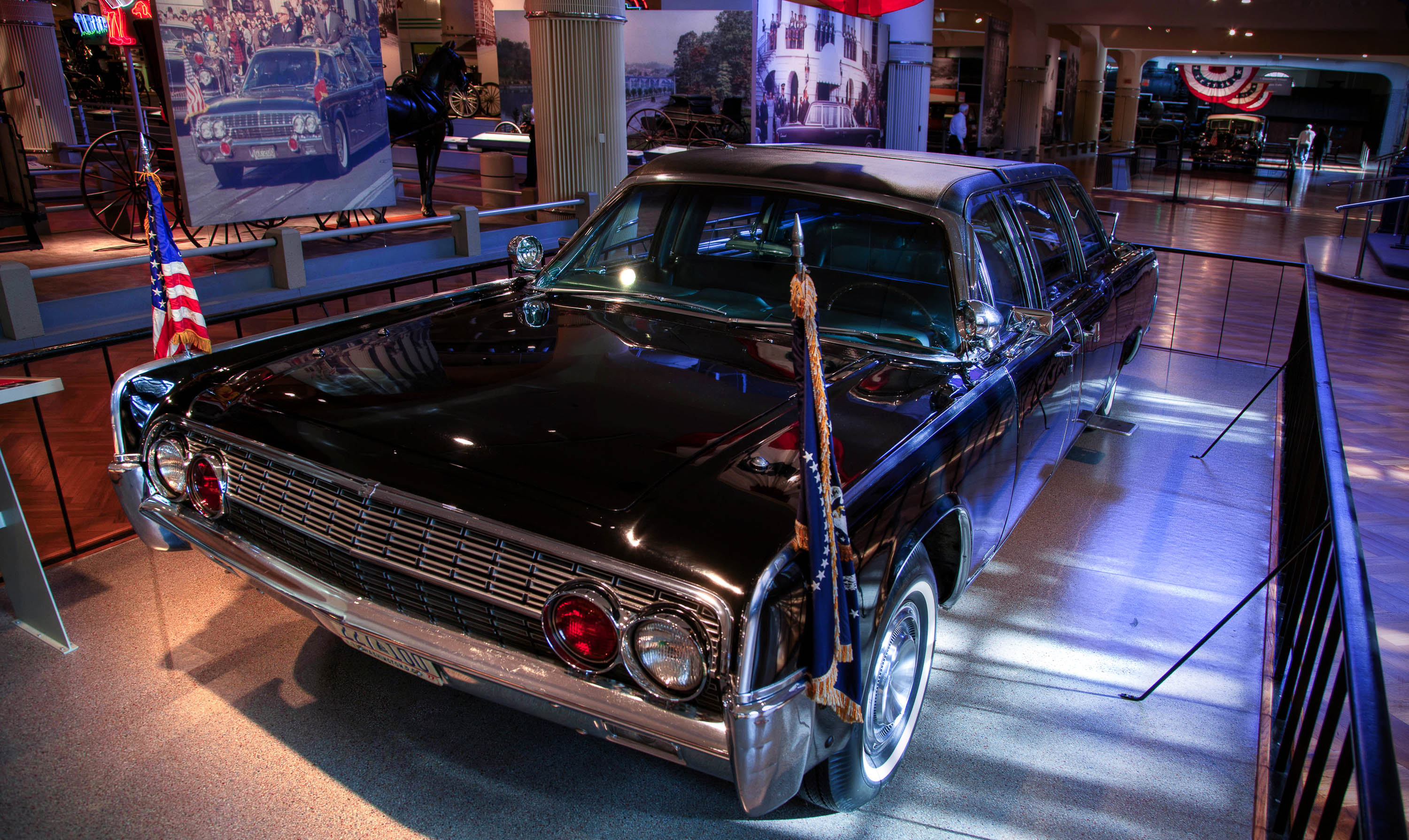
4. **Kennedy’s Lincoln Continental (The X-100, Pre-Assassination)**President John F. Kennedy’s 1961 Lincoln Continental, famously known by its Secret Service code names “SS-100-X and X-100,” began its life as a “stock car, built in Wixom, Michigan, and retailing for $7,347 (equivalent to $77,307 in 2024).” The federal government, recognizing the need for a specially adapted vehicle, “leased it from the Ford Motor Company for $500 (equivalent to $5,261 in 2024) annually,” before commissioning Hess and Eisenhardt to undertake extensive modifications for presidential use, at a substantial cost of “$200,000 (equivalent to $2,104,454 in 2024).”
The convertible was painted a distinctive “‘Presidential Blue Metallic’, with silver metal flakes embedded within it,” a sophisticated choice for a stylish president. Its features included a “‘heavy-duty heater and air conditioner, a pair of radiotelephones, a fire extinguisher, a first-aid kit, and a siren’.” To accommodate the presidential detail and offer more space, the “stock car was stretched 3.5 feet (1.1 m) to accommodate a foldable center row of forward-facing jump seats.” The exterior was fitted with practical additions such as “retractable standing platforms and handles for Secret Service agents, and flashing red lights recessed into the bumper.”
What truly set the X-100 apart, and tragically contributed to its vulnerability, were its innovative roof designs. “Unique to the X-100 were three removable roofs (made of fabric, lightweight metal, and transparent plastic) and a hydraulic lift that could raise the rear cushion 10+1⁄2 inches (270 mm) off the floor.” Both of these features were specifically “designed to make the president more visible to the public.” However, this emphasis on public visibility, while politically advantageous, “also increased the president’s vulnerability—a factor in the 1963 assassination of John F. Kennedy,” a stark and enduring lesson in presidential security.
Car Model Information: 2018 Lincoln Continental Reserve
Name: Lincoln Continental
Caption: 2019 Lincoln Continental
Manufacturer: Lincoln Motor Company
Production: 1939–1942,1946–1948,1956–2002,2016–2020
ModelYears: 1940–1942,1946–1948,1958–1980,1982–2002,2017–2020
Class: Full-size car,luxury car
Layout: Longitudinal engine,Front-engine, rear-wheel-drive layout
Categories: 1930s cars, 1940s cars, 1950s cars, 1960s cars, 1970s cars
Summary: The Lincoln Continental is a series of mid-sized and full-sized luxury cars produced between 1939 and 2020 by Lincoln, a division of the American automaker Ford. The model line was introduced following the construction of a personal vehicle for Edsel Ford, who commissioned a coachbuilt 1939 Lincoln-Zephyr convertible, developed as a vacation vehicle to attract potential Lincoln buyers. In what would give the model line its name, the exterior was designed with European “continental” styling elements, including a rear-mounted spare tire.
In production for over 55 years across nine different decades, Lincoln has produced ten generations of the Continental. Within the Lincoln model line, the Continental has served several roles ranging from its flagship to its base-trim sedan. From 1961 to 1976, Lincoln sold the Continental as its exclusive model line. The model line has also gone on hiatus three times. From 1949 to 1955, the nameplate was briefly retired. In 1981, the Continental was renamed the Lincoln Town Car to accommodate the 1982 seventh-generation Continental. After 2002, the Continental was retired, largely replaced by the Lincoln MKS in 2009; in 2017, the tenth-generation Continental replaced the MKS.
As part of its entry into full-scale production, the first-generation Continental was the progenitor of an entirely new automotive segment, the personal luxury car. Following World War II, the segment evolved into coupes and convertibles larger than sports cars and grand touring cars with an emphasis on features, styling, and comfort over performance and handling. From 1956 to 1957, the Continental nameplate was the namesake of the short-lived Continental Division, marketing the 1956–1957 Continental Mark II as the worldwide flagship of Ford Motor Company; as a second successor, Ford introduced the Continental Mark series in 1969, produced over six generations to 1998.
Along with the creation of the personal luxury car segment, the Lincoln Continental marked the zenith of several designs in American automotive history. The Continental is the final American vehicle line with a factory-produced V12 engine (1948), the final four-door convertible (1967), and the final model line to undergo downsizing (for the 1980 model year).
American production of the Continental and MKZ, its only two sedans, ended in 2020 thereby making Lincoln a crossover/SUV-only brand in the US.
Get more information about: Lincoln Continental
Buying a high-performing used car >>>
Brand: Lincoln Model: Continental
Price: $22,998 Mileage: 85,645 mi.
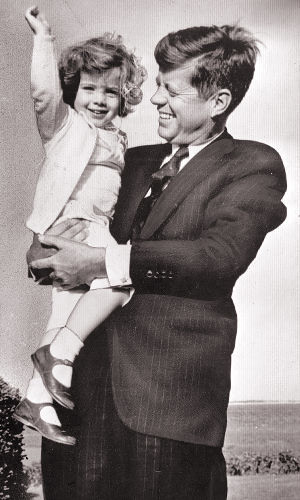
5. **The X-100’s Transformation: “The Quick Fix” Post-Assassination**The assassination of President John F. Kennedy in November 1963 tragically transformed the X-100 into what the “Associated Press” named the “‘Death Car’.” In the immediate aftermath, this vehicle became the subject of an urgent and unprecedented operation known as “‘The Quick Fix’.” Rather than retiring the car, a collaborative effort involving “Hess and Eisenhardt, the Secret Service, the United States Army Materials and Mechanics Research Center, PPG Industries, and Ford engineers” stripped the limousine down to its chassis to make substantial, life-saving improvements.
This extensive rebuild was not without its grim details; in an effort to prevent “‘ghoulish collectors’ from obtaining discarded car parts, they were destroyed.” The overhaul, estimated to cost “$500,000,” resulted in a car painted black, equipped with “improved telecommunications gear,” and a “fuel tank protected against explosion by a ‘porous foam matrix’ that minimized spillage in the event of a puncture.” Crucially, the “passenger compartment was protected by 1,600 pounds (730 kg) of armor,” a dramatic enhancement reflecting the new, harsh realities of presidential security.
One of the most significant changes was the replacement of the vulnerable removable roofs. They were supplanted by “a fixed glass enclosure that cost more than $125,000; the glass enclosure was made of 13 different pieces of bulletproof glass ranging in thickness from 1 to 1+13⁄16 inches (25 to 46 mm), and was then the largest piece of curved bulletproof glass ever made.” Further defensive measures included “Titanium armor added to the body of the car, the standard windows were made bullet-resistant with sandwiched layers of glass and polycarbonate vinyl, and prototype aluminum run-flat tires were added.” To manage the “25 percent increase in weight—to 9,800 pounds (4,400 kg)—the upgraded car received a hand-built 350-horsepower (260 kW) V8 engine, providing 17 percent more power.” The X-100, despite its tragic past, continued to serve Presidents Lyndon B. Johnson, Richard Nixon, Gerald Ford, and Jimmy Carter until its retirement in early 1977, standing as a stark reminder of a nation’s resolve to protect its leaders.
Car Model Information: 2018 Ford Utility Police Interceptor Base
Categories: Articles with short description, CS1 Flemish-language sources (nl-be), Commons category link from Wikidata, Ford vehicles, Lists of cars
Summary: Ford Motor Company sells a broad range of vehicles under the Ford marque worldwide. The following list does not include other marques owned or formerly owned by Ford, such as Lincoln, Mercury, Edsel and Merkur.
Get more information about: List of Ford vehicles
Buying a high-performing used car >>>
Brand: Ford Model: X-100
Price: $13,500 Mileage: 90,014 mi.
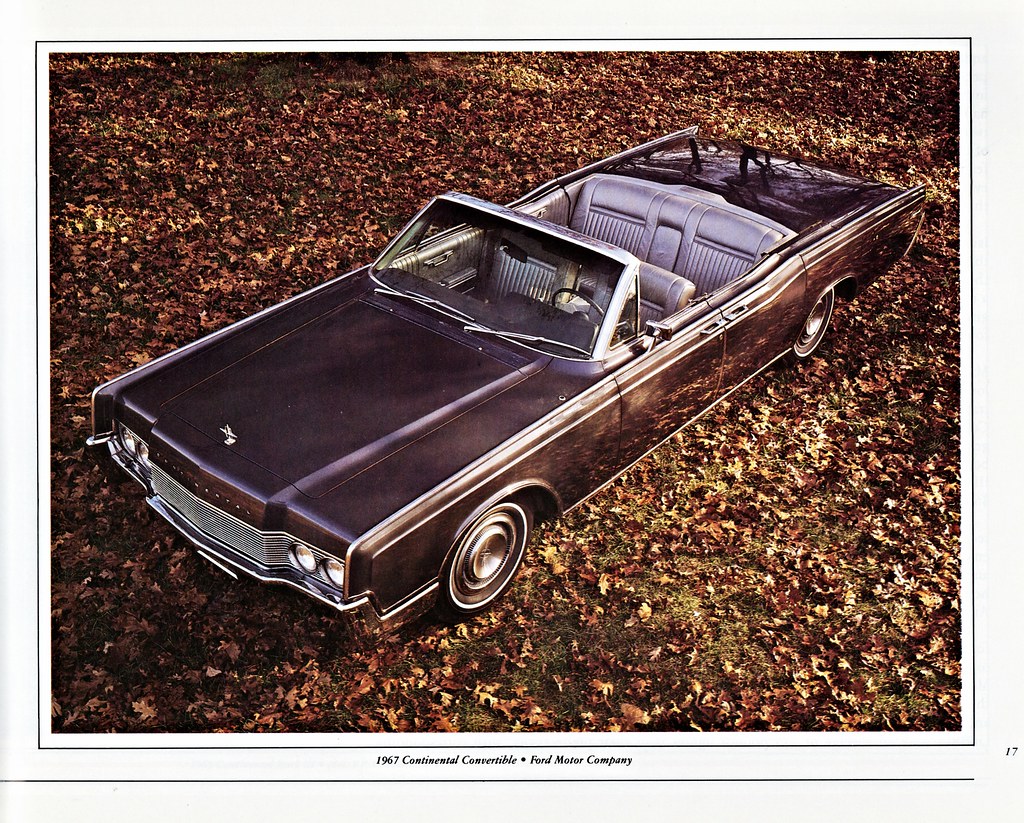
6. **Johnson’s 1967 Lincoln Continental: Armored Luxury for a New Era**Following the profound lessons learned from the Kennedy assassination, presidential vehicles entered an era where security became paramount, often dictating design and functionality over personal preference. President Lyndon B. Johnson, for example, “preferred white convertibles, but ‘concerns for protocol and safety’ had him receiving a black 1967 Lincoln Continental as his state car.” This hardtop limousine was a testament to the new focus on protection, with the Ford Motor Company investing approximately “$500,000 (equivalent to about $4,720,000 in 2024)” to build it, subsequently leasing it to the federal government for a symbolic “annual cost of $1 (equivalent to $9.43 in 2024).”
The 1967 Continental was a formidable machine, incorporating “4,000 pounds (1,800 kg) of armor” and a “‘bubble top thicker than the protective cockpit of an F-16 fighter’.” Despite its immense weight of “11,000-pound (5,000 kg),” powered by a “340-horsepower (250 kW) V8 engine,” the car was remarkably capable. It could still “reach speeds of 100 miles per hour (160 km/h) — or 50 miles per hour (80 km/h) with four flat tires,” demonstrating a blend of robust protection and essential mobility.
Interestingly, while “White House spokespeople” stated that “President Johnson’s car was not equipped with a television, though several of his cabinet members’ were,” it represented a new standard for presidential transport. This vehicle, like its predecessor, saw extensive service, also serving “Presidents Nixon, Ford, and Carter, and traveled to 32 nations before it was retired in the mid-to-late 1970s.” Its enduring legacy was cemented in 1996 when the “Ford Motor Company restored the car to its original state and donated it to the Richard Nixon Presidential Library and Museum in recognition of its use during several of his most-significant presidential trips,” highlighting its deep historical footprint.
Car Model Information: 2018 Lincoln Continental Reserve
Name: Lincoln Continental
Caption: 2019 Lincoln Continental
Manufacturer: Lincoln Motor Company
Production: 1939–1942,1946–1948,1956–2002,2016–2020
ModelYears: 1940–1942,1946–1948,1958–1980,1982–2002,2017–2020
Class: Full-size car,luxury car
Layout: Longitudinal engine,Front-engine, rear-wheel-drive layout
Categories: 1930s cars, 1940s cars, 1950s cars, 1960s cars, 1970s cars
Summary: The Lincoln Continental is a series of mid-sized and full-sized luxury cars produced between 1939 and 2020 by Lincoln, a division of the American automaker Ford. The model line was introduced following the construction of a personal vehicle for Edsel Ford, who commissioned a coachbuilt 1939 Lincoln-Zephyr convertible, developed as a vacation vehicle to attract potential Lincoln buyers. In what would give the model line its name, the exterior was designed with European “continental” styling elements, including a rear-mounted spare tire.
In production for over 55 years across nine different decades, Lincoln has produced ten generations of the Continental. Within the Lincoln model line, the Continental has served several roles ranging from its flagship to its base-trim sedan. From 1961 to 1976, Lincoln sold the Continental as its exclusive model line. The model line has also gone on hiatus three times. From 1949 to 1955, the nameplate was briefly retired. In 1981, the Continental was renamed the Lincoln Town Car to accommodate the 1982 seventh-generation Continental. After 2002, the Continental was retired, largely replaced by the Lincoln MKS in 2009; in 2017, the tenth-generation Continental replaced the MKS.
As part of its entry into full-scale production, the first-generation Continental was the progenitor of an entirely new automotive segment, the personal luxury car. Following World War II, the segment evolved into coupes and convertibles larger than sports cars and grand touring cars with an emphasis on features, styling, and comfort over performance and handling. From 1956 to 1957, the Continental nameplate was the namesake of the short-lived Continental Division, marketing the 1956–1957 Continental Mark II as the worldwide flagship of Ford Motor Company; as a second successor, Ford introduced the Continental Mark series in 1969, produced over six generations to 1998.
Along with the creation of the personal luxury car segment, the Lincoln Continental marked the zenith of several designs in American automotive history. The Continental is the final American vehicle line with a factory-produced V12 engine (1948), the final four-door convertible (1967), and the final model line to undergo downsizing (for the 1980 model year).
American production of the Continental and MKZ, its only two sedans, ended in 2020 thereby making Lincoln a crossover/SUV-only brand in the US.
Get more information about: Lincoln Continental
Buying a high-performing used car >>>
Brand: Lincoln Model: Continental
Price: $22,998 Mileage: 85,645 mi.
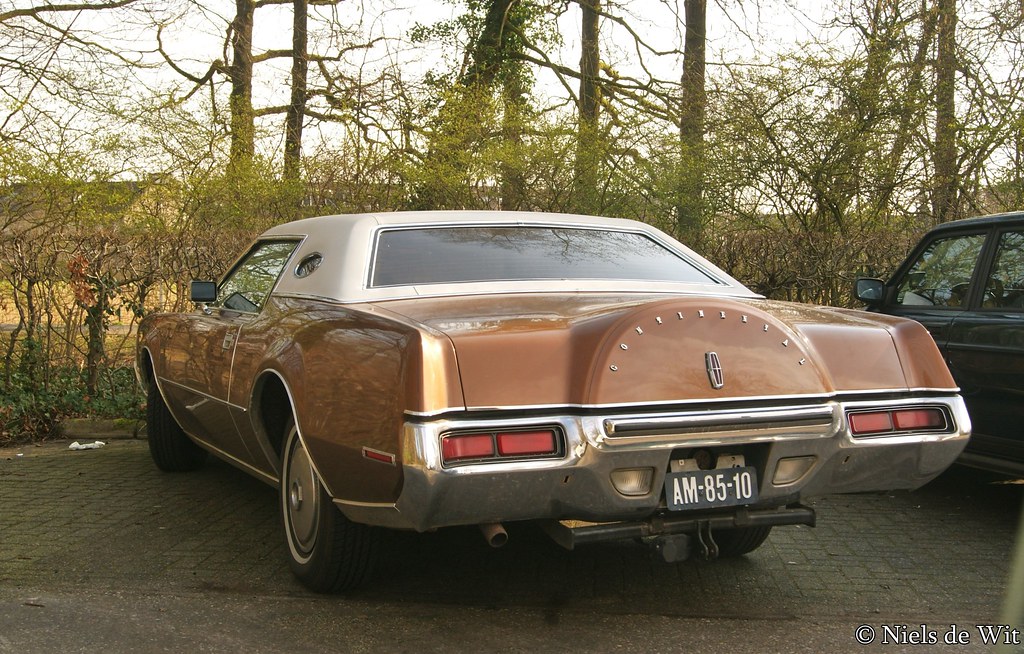
7. **The 1972 Lincoln Continental: A Workhorse of Security and Enduring Legacy**The modified 1972 Lincoln Continental, delivered to the White House in 1974, profoundly showcased the heightened demands for presidential security in the post-Kennedy era. This six-passenger limousine, leased from Ford, was a marvel of custom engineering. Measuring a substantial 22 feet (6.7 m) and weighing an impressive 13,000 pounds (5,900 kg), its robust construction protected the nation’s leader. Its powerful 460-cubic-inch (7.5 L), 214-horsepower (160 kW) V8 engine ensured essential mobility despite its immense bulk.
Acting as a rolling fortress, this vehicle featured comprehensive armor plating and bulletproof glass. External microphones allowed occupants to discern outside noises, offering a unique blend of isolation and situational awareness. Racks for Secret Service submachine guns further underscored its serious security posture. This Lincoln served an unprecedented five presidents: Richard Nixon, Gerald Ford, Jimmy Carter, Ronald Reagan, and George H. W. Bush.
Its service was marked by historical incidents. In 1975, President Ford was targeted in it. More dramatically, during the March 1981 assassination attempt on President Ronald Reagan, the limousine was struck by two gunshots. These damaged a bulletproof window and ultimately struck the president. Despite the attack, the car successfully transported Reagan to George Washington University Hospital, demonstrating its critical protective capabilities.
Following the assassination attempt, the 1972 Lincoln underwent extensive repairs and upgrades, including a new interior and refreshed exterior elements. It remained in active service until 1992, accumulating over 40,000 miles. Preserved by The Henry Ford museum, its precise dimensions underscore the legacy of a vehicle that truly made history.
Car Model Information: 2018 Lincoln Continental Reserve
Name: Lincoln Continental
Caption: 2019 Lincoln Continental
Manufacturer: Lincoln Motor Company
Production: 1939–1942,1946–1948,1956–2002,2016–2020
ModelYears: 1940–1942,1946–1948,1958–1980,1982–2002,2017–2020
Class: Full-size car,luxury car
Layout: Longitudinal engine,Front-engine, rear-wheel-drive layout
Categories: 1930s cars, 1940s cars, 1950s cars, 1960s cars, 1970s cars
Summary: The Lincoln Continental is a series of mid-sized and full-sized luxury cars produced between 1939 and 2020 by Lincoln, a division of the American automaker Ford. The model line was introduced following the construction of a personal vehicle for Edsel Ford, who commissioned a coachbuilt 1939 Lincoln-Zephyr convertible, developed as a vacation vehicle to attract potential Lincoln buyers. In what would give the model line its name, the exterior was designed with European “continental” styling elements, including a rear-mounted spare tire.
In production for over 55 years across nine different decades, Lincoln has produced ten generations of the Continental. Within the Lincoln model line, the Continental has served several roles ranging from its flagship to its base-trim sedan. From 1961 to 1976, Lincoln sold the Continental as its exclusive model line. The model line has also gone on hiatus three times. From 1949 to 1955, the nameplate was briefly retired. In 1981, the Continental was renamed the Lincoln Town Car to accommodate the 1982 seventh-generation Continental. After 2002, the Continental was retired, largely replaced by the Lincoln MKS in 2009; in 2017, the tenth-generation Continental replaced the MKS.
As part of its entry into full-scale production, the first-generation Continental was the progenitor of an entirely new automotive segment, the personal luxury car. Following World War II, the segment evolved into coupes and convertibles larger than sports cars and grand touring cars with an emphasis on features, styling, and comfort over performance and handling. From 1956 to 1957, the Continental nameplate was the namesake of the short-lived Continental Division, marketing the 1956–1957 Continental Mark II as the worldwide flagship of Ford Motor Company; as a second successor, Ford introduced the Continental Mark series in 1969, produced over six generations to 1998.
Along with the creation of the personal luxury car segment, the Lincoln Continental marked the zenith of several designs in American automotive history. The Continental is the final American vehicle line with a factory-produced V12 engine (1948), the final four-door convertible (1967), and the final model line to undergo downsizing (for the 1980 model year).
American production of the Continental and MKZ, its only two sedans, ended in 2020 thereby making Lincoln a crossover/SUV-only brand in the US.
Get more information about: Lincoln Continental
Buying a high-performing used car >>>
Brand: Lincoln Model: Continental
Price: $22,998 Mileage: 85,645 mi.
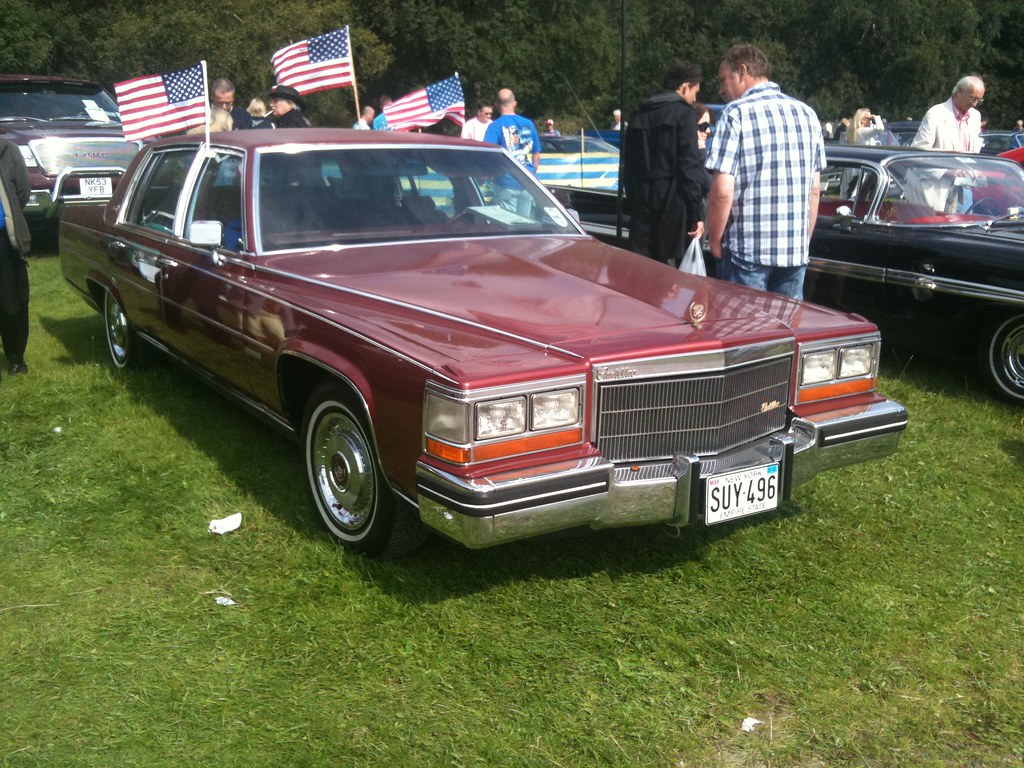
8. **The 1983 Cadillac Fleetwood: A New Silhouette of Protected Transport**The mid-1980s heralded a new presidential state car, a 1983 Cadillac Fleetwood, delivered on January 30, 1984. This vehicle continued the tradition of combining luxury with unparalleled protection, representing a modern iteration of presidential transport. Designed for an evolving security landscape, it featured a distinctive appearance that signaled a new direction for the presidential fleet.
Significantly larger than its standard counterpart, this Fleetwood was extended by 17 inches (430 mm) and raised 3 inches (76 mm) taller, providing a more imposing presence and increased interior space. Its “distinctively styled, with a raised roof and a large rear greenhouse,” offered enhanced visibility while maintaining high levels of security.
Central to its protective mission, the 1983 Fleetwood featured comprehensive armor plating and bulletproof glass, an impressive 2+3⁄8 inches (60 mm) thick. To compensate for the substantial weight, it was equipped with oversized wheels, heavy-duty brakes, and an automatic leveling system. These engineering adaptations ensured the limousine remained stable and maneuverable, performing its critical duties effectively.
Car Model Information: 1995 Cadillac Fleetwood Base
Name: Cadillac Fleetwood
Caption: 1994 Cadillac Fleetwood
Manufacturer: General Motors
Production: 1976–1996
ModelYears: 1977–1996
Class: Full-size,luxury car
Layout: Front-engine, front-wheel-drive layout
Successor: Cadillac CT6
Categories: 1940s cars, 1950s cars, 1960s cars, 1970s cars, 1980s cars
Summary: The Cadillac Fleetwood is a full-size luxury sedan that was marketed by Cadillac from the 1977 through 1996 model years. Taking its nameplate from a coachbuilder historically associated with the General Motors division, the Cadillac Fleetwood became a stand-alone model line in 1985.
The first-generation Cadillac Fleetwood was introduced for 1985 as the division downsized its full-size C-body platform sedans to a front-wheel-drive layout. Slotted between the Sedan deVille and the Sixty Special, the Fleetwood also bridged the gap between the deVille and the D-body Fleetwood Brougham (Cadillac Brougham for 1987–1992). The second generation was introduced for 1993, replacing the Brougham as the D-body Cadillac sedan (the Fleetwood Brougham name became a trim option).
After the 1996 model year, Cadillac discontinued the Fleetwood line as GM ended production of full-size sedan lines in North America. General Motors consolidated Cadillac’s large sedan lines into the deVille series and later as the Cadillac DTS. Since 1996, the only longer-wheelbase sedans produced by the division have been the Cadillac CT6 and Cadillac Celestiq.
Get more information about: Cadillac Fleetwood
Buying a high-performing used car >>>
Brand: Cadillac Model: Fleetwood
Price: $16,995 Mileage: 77,034 mi.
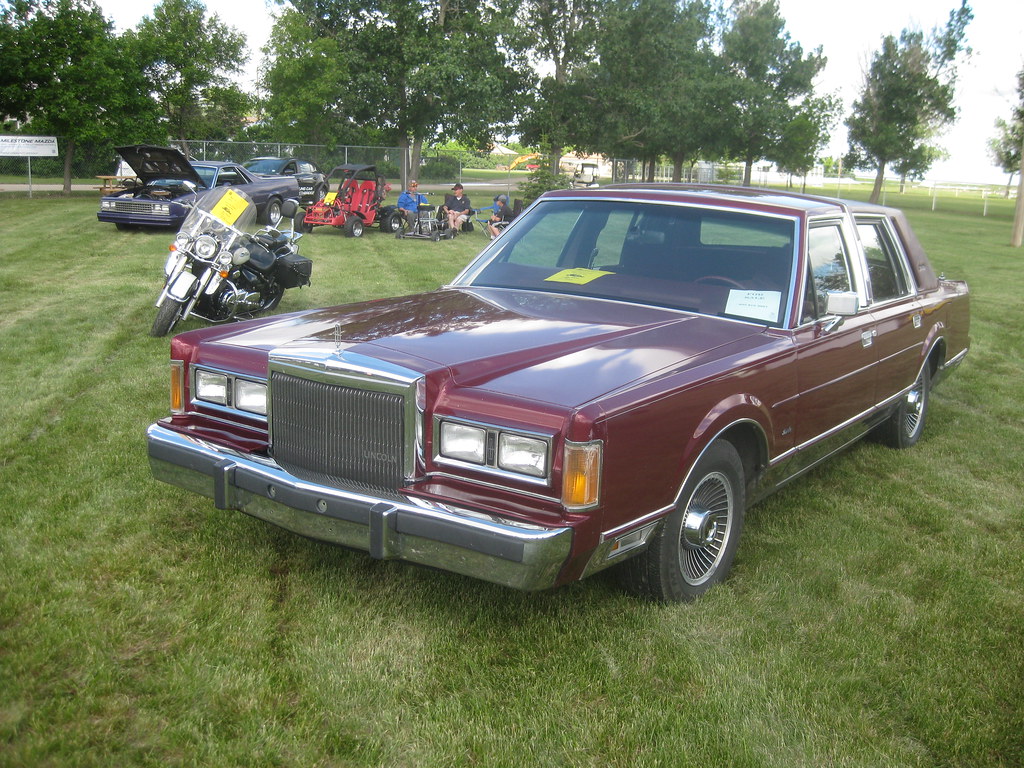
9. **The 1989 Lincoln Town Car: Embracing Space and Advanced Security**The close of the 1980s brought another significant addition to the presidential motorcade: a 1989 Lincoln Town Car, commissioned by the George H.W. Bush administration. This vehicle continued the trend of bespoke modifications, pushing the boundaries of limousine design. It incorporated heightened security needs and provided a unique presidential environment, blending classic American luxury with robust protective capabilities.
Commanding attention with its sheer size, it measured an impressive 22 feet (6.7 m) in length and stood over 5 feet (1.5 m) tall. Substantial modifications included an extra section behind the B-pillar, thoughtfully incorporating rear-facing seats. This innovative layout expanded passenger capacity and facilitated direct interaction between the president and accompanying staff, fostering a more conversational and secure setting.
Further enhancing its specialized design, the 1989 Town Car featured a redesigned E-pillar allowing for forward-facing seats, offering flexible arrangements within the expanded cabin. A distinctly raised roof contributed to its imposing stature and provided additional headroom, ensuring comfort while maintaining a secure and commanding presidential presence.
Car Model Information: 2023 Genesis GV80 2.5T
Name: Lincoln Town Car
Manufacturer: Lincoln Motor Company
Production: 1980–2011
ModelYears: 1981–2011
Class: Full-size,luxury car
Platform: Ford Panther platform
Related: Mercury Grand Marquis,Ford Crown Victoria,Ford LTD Crown Victoria
Layout: Front-engine, rear-wheel drive layout
Predecessor: Lincoln Continental#Sixth generation (1980)
Successor: Lincoln MKT
Categories: 1990s cars, 2000s cars, 2010s cars, All articles with dead external links, Articles with dead external links from March 2025
Summary: The Lincoln Town Car was a model line of full-size luxury sedans that was marketed by the Lincoln division of the American automaker Ford Motor Company. Deriving its name from a limousine body style, Lincoln marketed the Town Car from 1981 to 2011, with the nameplate previously serving as the flagship trim of the Lincoln Continental. Produced across three generations for thirty model years, the Town Car was marketed directly against luxury sedans from Cadillac and Chrysler.
Marketed nearly exclusively as a four-door sedan (a two-door sedan was offered for 1981 only), many examples of the Town Car were used for fleet and livery (limousine) service. From 1983 to its 2011 discontinuation, the Town Car was the longest car produced by Ford worldwide, becoming the longest mass-production car sold in North America from 1997 to 2011. While not a direct successor of the Town Car, the Lincoln MKS would become the longest American sedan until 2016 (overtaken by the Cadillac CT6).
From 1980 until 2007, the Lincoln Town Car was assembled in Wixom, Michigan, (Wixom Assembly) alongside the Lincoln Continental, LS, and Mark VI, VII, and VIII. After Wixom’s closure, Town Car production moved to Southwold, Ontario, (St. Thomas Assembly) alongside the similar Ford Crown Victoria and the Mercury Grand Marquis. The final Lincoln Town Car was produced on August 29, 2011.
Within the Lincoln model line, the Town Car was not directly replaced; the nameplate was used from 2012 to 2019 to denote livery/limousine/hearse variants of the Lincoln MKT. For 2017, the revived Continental replaced the MKS, closely matching the Town Car in wheelbase and width.
Get more information about: Lincoln Town Car
Buying a high-performing used car >>>
Brand: Lincoln Model: Town Car
Price: $38,452 Mileage: 37,710 mi.

10. **The Dawn of “The Beast”: George W. Bush’s Custom Cadillac (2001–2009)**The new millennium heralded a pivotal shift in presidential vehicle design, ushering in an era of purpose-built security. By 2001, standard Cadillacs no longer met Secret Service demands, as previous limousines struggled under the weight of extensive armor. President George W. Bush’s state car thus became the first designed from the ground up by “an R&D arm of General Motors in Detroit,” precisely to meet bespoke security specifications.
This new generation earned the enduring nickname, “The Beast,” capturing its formidable nature. While exact specifications were secret, speculation suggested President Bush’s Cadillac “Deville” was based on robust GM full-size SUV chassis, providing a sturdy foundation. Its estimated weight was 14,000 pounds (6,400 kg).
“The Beast” was rumored to boast extraordinary defenses: five-inch armored doors and bulletproof glass so thick it “blocks out parts of the light spectrum.” Speculated components included sealed passenger compartments with their own air supply, run-flat tires, and a powerful 454-cubic-inch (7.44 L) engine. Confirmed amenities included a “10-disc CD changer, a foldaway desktop[,] and reclining rear seats with massaging, adaptive cushions.”
Logistical complexities were immense. Travel often involved two armored limousines, flown by C-5 or C-17 cargo planes for redundancy. This proved crucial when one car stalled in Rome in 2007; the backup ensured no disruption. Overseas, the president exclusively used American-governmental vehicles, affirming an unwavering commitment to consistent, secure transport.
Car Model Information: 1962 Cadillac Series 62 Coupe
Caption: 1931 Cadillac V-16 Sport Phaeton convertible
Name: Cadillac V-16
Engine: Cadillac V16 engine
Manufacturer: Cadillac
Production: 1930–1940
Platform: GM D platform
Assembly: Detroit Assembly
Class: Ultra-luxury car
Layout: FR layout
BodyStyle: convertible (car)
Transmission: synchromesh,manual transmission
Designer: Harley Earl
Categories: Articles with short description, Cadillac vehicles, Cars discontinued in 1940, Cars introduced in 1930, Motor vehicles manufactured in the United States
Summary: The Cadillac V-16 (also known as the Cadillac Sixteen) was Cadillac’s top-of-the-line model from its January 1930 launch until 1940. The V16 powered car was a first in the United States, both extremely expensive and exclusive, with every chassis being custom-finished to order. Only 4,076 were constructed in its 11-year run, with the majority built in its debut year before the Great Depression took strong hold. The onset of World War II reduced the sales, resulting in its demise.
Get more information about: Cadillac V-16
Buying a high-performing used car >>>
Brand: Cadillac Model: Custom
Price: $47,490 Mileage: 99,876 mi.

11. **The Modern Era: From Obama’s “Beast” to Today’s Unrivaled Presidential State Car**The 21st century has witnessed an extraordinary evolution in presidential transport, culminating in vehicles that are engineering marvels of security and technological integration. The 2009–2018 presidential state car, a Cadillac debuting with President Barack Obama’s first inauguration, exemplified this progression. Not based on a single production model, it incorporated distinctive Cadillac design cues, hinting at a robust foundation like the GMC Topkick platform. This formidable machine, weighing 15,000-20,000 pounds, required heavy-duty truck tires, reflecting its unparalleled protection and estimated cost of up to $1.5 million.
This “Beast” generation was equipped with astonishing defensive capabilities. It boasted five-inch bulletproof glass, run-flat tires, and a hermetically sealed interior with onboard oxygen tanks against chemical attacks. Active defenses included night vision optics, a tear gas cannon, pump-action shotguns, and an armored fuel tank filled with foam. Its eight-inch thick doors visibly declared the security within, leading GM to describe its “precise and special specifications” and curators to dub it “a tank with a Cadillac badge.”
The commitment to presidential security intensified with the current model, retaining the nickname “the Beast.” GM commenced development in 2014. Debuting with President Trump in September 2018, this massive evolution blends the robust GMC TopKick platform with contemporary Cadillac design. Weighing 15,000-20,000 pounds and about six feet tall, it seats seven occupants, balancing imposing presence with practical capacity.
The defensive arsenal of the current “Beast” represents the pinnacle of modern automotive security. It carries stores of the president’s blood type for medical emergencies and a hermetically sealed cabin. Advanced defenses include night-vision devices, smoke screens, and oil slicks, complemented by run-flat tires. Its armor, a composite of aluminum, ceramic, and steel, forms eight-inch thick exterior walls. Multi-layered, five-inch thick bulletproof windows and one-foot thick doors provide impenetrable protection, capable of electrifying handles to deter entry. This current “Beast,” operating alongside its immediate predecessor, exemplifies the nation’s unwavering dedication to protecting its leaders.
**The Enduring Legacy: Decommissioning and the Presidential Motorcade**
The life cycle of these extraordinary presidential vehicles concludes not with sale, but rigorous, clandestine decommissioning. The Secret Service orchestrates destruction for two purposes: live-fire tests for training effectiveness, and crucially, shredding the vehicle to protect classified secrets of its manufacture and defensive capabilities.
Beyond the presidential state car, transporting the President involves a meticulously choreographed motorcade—a rolling symbol of national security. Motorcades have grown significantly, from 17+ cars under Kennedy to 30+ under Obama. These convoys include police, Secret Service SUVs, electronic countermeasures, a Counter Assault Team, hazardous-materials personnel, press vans, and an ambulance. While the state car is Secret Service maintained, other support vehicles fall under the White House Military Office. Due to the complexity of organizing such extensive ground convoys, helicopters (Marine One) are often preferred for efficiency.
**Conclusion: A Testament to American Ingenuity and Resilience**
Car Model Information: 2023 Mazda Mazda3 FWD w/Select Package
Spell: in
Adj: Stanley Motor Carriage Company,steam car
Categories: All Wikipedia articles written in American English, All articles containing potentially dated statements, All articles lacking reliable references, All articles with incomplete citations, All pages needing factual verification
Summary: The United States presidential state car (nicknamed “the Beast”, “Cadillac One”, “First Car”; code named “Stagecoach”) is the official state car of the president of the United States.
United States presidents embraced automotive technology in the early 20th century with President William Howard Taft’s purchase of four cars and the conversion of the White House stables into a garage. Presidents rode in stock, unmodified cars until President Franklin D. Roosevelt’s administration bought the Sunshine Special, the first presidential state car to be built to United States Secret Service standards. Until the assassination of John F. Kennedy, presidential state cars frequently allowed the president to ride uncovered and exposed to the public. President Kennedy’s assassination began a progression of increasingly armored and sealed cars; the 2009–2018 state car had five-inch (130 mm) bulletproof glass and was hermetically sealed with its own environmental system. Since 2018 the presidential state car has been a custom-built Cadillac.
Decommissioned presidential state cars are destroyed by the Secret Service for training and to protect their secrets. Late 20th-century and 21st-century presidential motorcades have consisted of 24–45 vehicles other than the presidential state car, including those for security, healthcare, the press, and route-clearing, among others.
The first
president to ride in a car was President William McKinley, who briefly rode in a Stanley Motor Carriage Company steam car on July 13, 1901. According to the United States Secret Service, it was customary for them to follow the presidential horse-and-buggy on foot, but that with the popularization of the automobile, the Secret Service purchased a 1907 White Motor Company steam car to follow President Theodore Roosevelt’s horse-drawn carriage. Roosevelt avoided riding in the vehicle due to his “image as a rough-riding horseman”.
Get more information about: Presidential state car (United States)
Buying a high-performing used car >>>
Brand: Cadillac Model: Presidential State Car
Price: $17,197 Mileage: 57,859 mi.
From President Taft’s stables to today’s heavily armored “Beast,” presidential vehicles trace a compelling narrative of innovation, security, and symbolism. More than transport, they are meticulously crafted embodiments of American ingenuity, reflecting evolving threats and an unwavering commitment to presidential safety. These machines have witnessed pivotal history, endured assassination attempts, and served as silent guardians, transforming from symbols of prestige into mobile fortresses. As they continue to evolve, they remain powerful testaments to the nation’s resolve to protect its leaders, ensuring the continuity of the presidency and symbolizing the enduring strength of the United States on the world stage.



